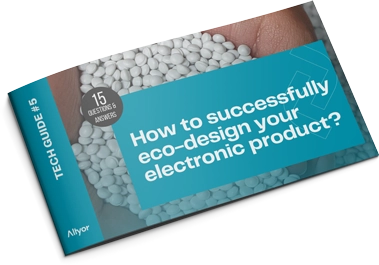How to successfully
eco-design of your
electronic product?
The Tech guide from Altyor’s experts


What does eco-design actually mean?
Eco-design, often abbreviated, is a concept that is being used more and more frequently in various fields. However, its exact scope can sometimes seem unclear.
In this in-depth guide, our experts have carefully developed 15 key points to help you fully grasp the scope and implications of eco-design. These points cover various aspects, such as the fundamental principles, recommended practices, and the benefits for both the environment and business. By exploring these elements, you will be able to gain a more complete understanding of how to integrate eco-design into your approach, thereby contributing to more sustainable and responsible choices.
What are the challenges of eco-design?
In this guide, our experts have put together 15 tips to help you understand how to implement an eco-design strategy. Here you’ll find
For over 10 years, Altyor has been developing expertise in the use of recycled materials in its customers’ products. This expertise has deepened around eco-design and the circular economy. We use this expertise to help our customers measure the environmental footprint of their products, as well as implementing eco-design building blocks.
Download your guide
Discover the Eco-Design Diag
Concrete solutions to reduce your product’s environmental footprint
From design to industrialization, production and remanufacturing, we offer ongoing, customized global support to ensure the success of your project.
01
Innovation support
_Building a solid foundation for your industrial project
02
Mechanical and electronic design
_Giving lasting life to your product
03
Industrialization
_Industrializing your product to make your production more reliable
04
Production
_Implementing your robust production line
05
Remanufacturing
_Supporting your product’s life cycle